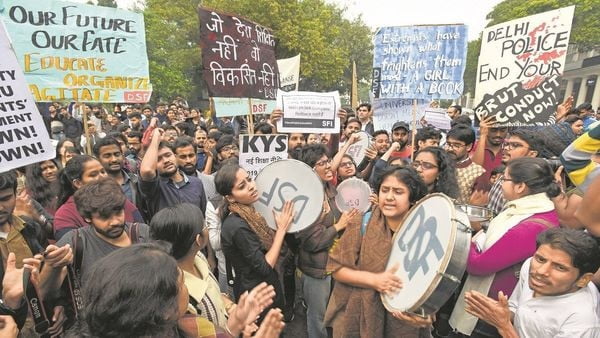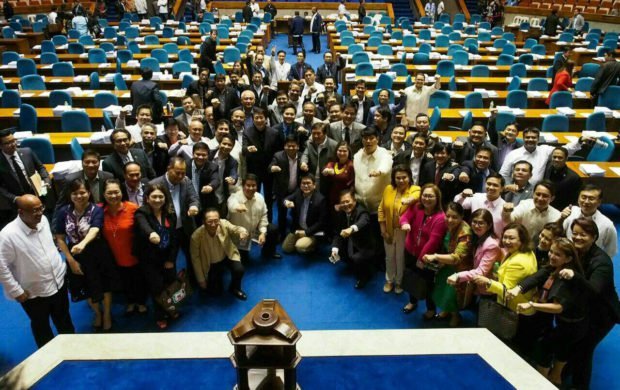
The Aam Aadmi Party’s (AAP’s) campaign for the forthcoming Delhi election has focused on its delivery of services in the past five years, especially on improvements in school infrastructure and examination scores. AAP has consistently dedicated about 24% of Delhi’s annual budgeted expenditure to education, by far the highest percentage outlay in the country. Its efforts are already being emulated in places like Maharashtra, and will become an attractive model across India should the party repeat its astonishing electoral success of 2014.
The Central government, meanwhile, appears headed in the other direction. The share of the Union budget allotted to education, approximately 40% of which goes to higher learning and research, has fallen from 4.14% in 2014-15 to 3.4% in 2019-20. Last December, having provided a tax cut to corporations that will cost it an estimated ₹1.45 trillion annually, the government slashed ₹3,000 crore from its education outlay for the current financial year. I would be happy if the forthcoming budget were to reverse the decline, but the past five years inspire little confidence.
As the Centre curtails provisions, universities have sought to bolster other sources of income. A sharp increase in room rents and mess charges in late October sparked an agitation in Delhi’s Jawaharlal Nehru University (JNU) which culminated in a ghastly attack on the campus by masked activists on 5 January. Opponents of the fee hike pointed out that nearly 40% of students admitted to JNU had a monthly family income below ₹12,000, and would find it difficult, if not impossible, to pay the rates enumerated in the new hostel manual, especially a new monthly service charge of ₹1,700.
In December, five students from the Film and Television Institute of India (FTII) in Pune and six from its sister institution, Kolkata’s Satyajit Ray Film and Television Institute (SRFTI), sat on a hunger strike protesting a huge hike in fees for the Joint Entrance Test (JET) taken by all applicants to those institutions. The protesting students, having already passed JET, had no personal gain in mind, but were concerned that prospective candidates from lower income groups would be discouraged from applying in the future.
Both the JNU fees and JET charges were partially rolled back last month. On 24 January, Justice Rajiv Shakdher of the Delhi high court ordered the JNU administration to allow admissions based on the older hostel manual, without any fine for late payment, saying, “The burden of paying contractual employees’ salary cannot be put on students in government-run institutions….The government has to fund public education. It cannot get out of it.”
Notwithstanding occasional interventions from progressive voices and the half-victories of partial fee rollbacks, the government appears determined to distance itself from higher education. The Union budget of 2018-19 scrapped grants for creating new infrastructure within institutions like Indian Institutes of Technology (IITs), Indian Institutes of Management (IIMs) and Central universities. In its place, we now have the Higher Education Financing Agency (Hefa), a joint venture between the human resources ministry and Canara Bank, which aims to “enable India’s premier educational institutions to excel and reach the top in global rankings by financing building world class infrastructure including R&D Infra”. According to Hefa’s website, it will provide loans to approved projects, which will be “serviced through internal accruals”.
What kind of internal accruals could possibly pay for the establishment of world-class research and development infrastructure? According to the data-driven non-profit IndiaSpend, 37% of all corporate social responsibility (CSR) money was funnelled into education in 2016-17, yet this amounted to less than 0.5% of what the Central government spent, and less than 0.1% of the combined spending on education by the Centre and states. It is unlikely that private firms and philanthropists will fill the gaping hole left by the withdrawal of Central support.
With aid from the University Grants Commission drying up, colleges and universities are focusing on courses that can pay for themselves, usually in areas like management, media and computer programming. Core humanities curricula can only suffer in the rush to self-finance, and research in the sciences is also bound to be hit, considering the cost of setting up and running good laboratories.
As Hefa loans come due, all institutes of higher education are likely to follow the path of JNU and FTII, hiking fees for entrance tests, courses, hostels and canteens. It might take a strike at an IIT for the public at large to come round to the students’ point of view, because the current dispensation has successfully sold the image of JNU as a hotbed of freeloaders and malcontents.
The data paints a very different picture of JNU. The institution scores excellently in the government’s own measures of academic excellence. Of the 32 candidates who passed the latest Union Public Service Commission’s Indian Economic Services Examination, 18 were JNU alumni. For anybody not blinded by bias, it is evident that activists who have emerged from JNU in recent years, like Kavita Krishnan, Kanhaiya Kumar, Umar Khalid and the current president of the students’ union, Aishe Ghosh, combine a high level of intelligence and historical comprehension with eloquence and passion. The institution produces both individuals who will administer the country and those who seek to change it fundamentally.
JNU and FTII are far from being ideal academies, but we must avoid making the perfect an enemy of the good, and instead recognize an institution’s strengths even as we highlight its defects. We need also to resist setting up false binaries. It serves no useful purpose to compare subsidized food in film schools with malnourishment in the countryside, for instance. Not only does the government have enough money to run good universities while also feeding all citizens, slashing funding to colleges will do nothing to improve the efficiency of our public distribution system.
India created strong schools in the humanities, sciences, design, management, cinema and a variety of other disciplines in an era when the government had few funds at its disposal. More recently, AAP has demonstrated that a commitment to education can greatly improve outcomes in government-run schools. We need an administration at the Centre that invests more in higher learning, and in expanding opportunities to all segments of the population. This may seem like a no-brainer, for it is what all successful nations do, but the government has chosen, instead, to demonize its universities and cut back on outlays for research and infrastructure augmentation. The country will pay heavily for this short-sightedness.
[“source=livemint”]



